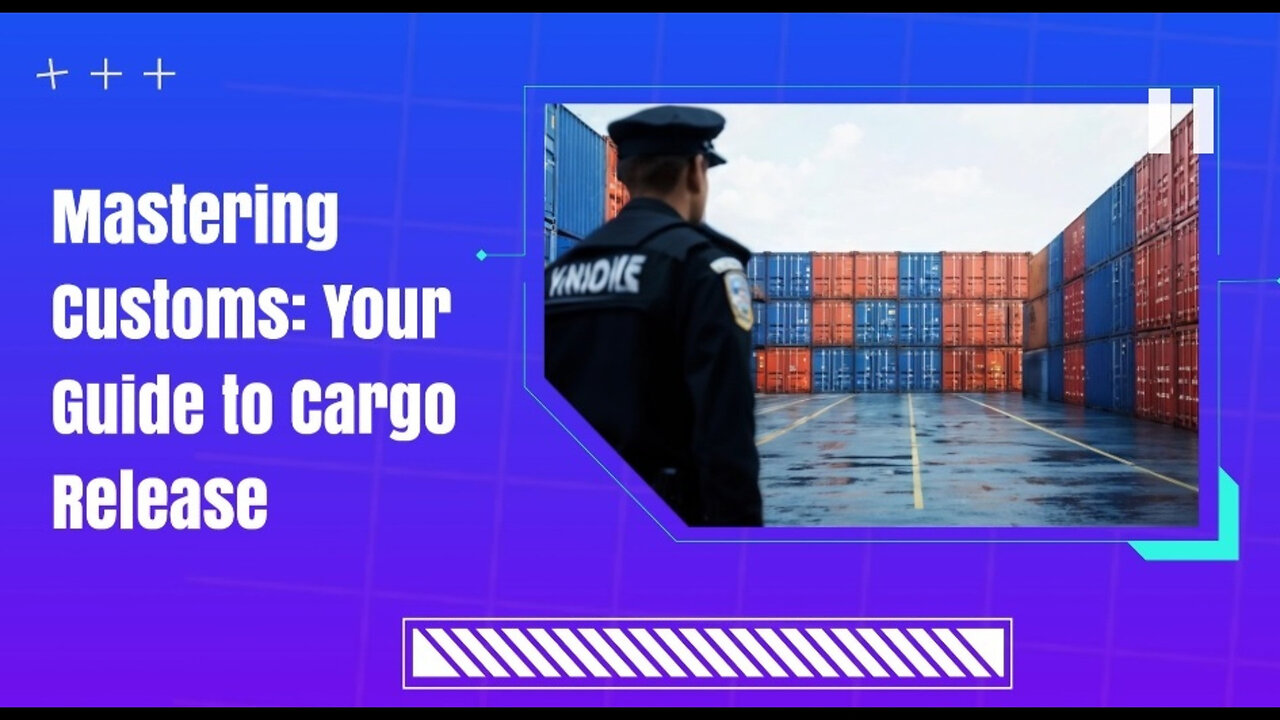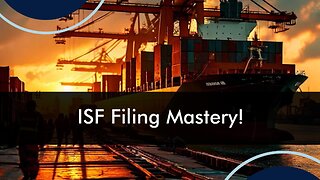Premium Only Content

Navigating Customs: From Clearance to Cargo Release
ISF Depot // 661-246-8217 // customs@isfdepot.com // www.isfdepot.com
In today's video, we discussed the next phase of the customs brokerage process: customs clearance and cargo release. After submitting the Importer Security Filing (ISF), the customs clearance process begins with the examination and verification of all relevant documents, such as commercial invoices, bills of lading, and packing lists. These documents are reviewed by customs officers to ensure compliance with applicable laws and regulations.
Once the documents are approved, the customs broker works closely with the importer to determine the most suitable method of transportation and delivery, which could involve air freight, ocean freight, or land transportation, depending on factors such as cost, urgency, and the nature of the goods being imported.
The cargo release phase starts after the shipment arrives at the designated port of entry. The cargo undergoes an inspection by customs authorities, which may include physical examination, x-ray scans, or laboratory testing, depending on the nature of the goods. This inspection is conducted to verify that the cargo matches the information provided in the documents and complies with all relevant regulations.
Providing accurate and detailed information in the import documentation is crucial to speed up the customs clearance process. This includes describing the goods thoroughly, stating their value, quantity, and any applicable codes or classifications. Failure to provide accurate information can result in delays, penalties, or even the seizure of the goods.
Once the customs authorities are satisfied with the inspection results and all necessary duties, taxes, and fees are paid, the cargo is cleared for release. At this point, the importer can make arrangements for the final delivery of the goods to their intended destination.
The customs clearance process is essential for both importers and the government. It ensures that imported goods comply with safety, security, and trade regulations, protects domestic industries and consumers from substandard or counterfeit products, and allows the government to collect import duties and taxes.
Overall, customs clearance and cargo release require meticulous attention to detail, cooperation between the importer and the customs broker, and adherence to all relevant regulations. We hope you found this deep dive into the topic informative and helpful. If you have any further questions or suggestions for future videos, please let us know in the comments below. Don't forget to subscribe to our channel and click the notification bell to stay updated on our upcoming videos. Until next time, safe travels and smooth customs clearances!
#usimportbond #isfcustomsbroker #uscustomsclearing #isfentry
Video Disclaimer Here: This tutorial is independent and not affiliated with any US governmental entities.
00:31 - Customs clearance involves the examination and verification of documents like the commercial invoice and bill of lading.
00:51 - The customs officer ensures compliance with laws and regulations before approving the documents.
1:10 - Cargo release includes an inspection by customs authorities to verify the information provided matches the goods.
1:36 - Providing accurate information in import documentation is crucial to avoid delays or penalties.
-
 3:41
3:41
ISF Depot
20 hours agoUnlocking LCL Success: Mastering Efficient ISF Filing for Harmonious Shipments
3 -
 1:22:15
1:22:15
Glenn Greenwald
9 hours agoCharlie Kirk Assassination Fallout: U.S. Reps Call for Censorship; Do Graphic Videos Serve the Public Interest? Plus: WIRED Reporter on the Dark Side of Surrogacy | SYSTEM UPDATE #513
195K175 -
 1:48:36
1:48:36
Right Side Broadcasting Network
15 hours agoLIVE: President Trump Attends the Yankees Baseball Game - 9/11/25
168K24 -
 1:54:32
1:54:32
Badlands Media
9 hours agoBadlands Media Special Coverage - FBI Press Conference on Charlie Kirk's Assassination
139K20 -
 1:06:19
1:06:19
BonginoReport
10 hours agoManhunt Underway for Charlie Kirk’s Assassin - Nightly Scroll w/ Hayley Caronia (Ep.132)
302K238 -
 1:11:42
1:11:42
Flyover Conservatives
18 hours agoStructural Architect Destroys 9.11 Narrative... What Really Happened? - Richard Gage AIA | FOC Show
92.6K16 -
 1:51:14
1:51:14
Precision Rifle Network
14 hours agoS5E1 Guns & Grub - Charlie Kirk's "sniper"
53K16 -
 13:09:12
13:09:12
LFA TV
21 hours agoLFA TV ALL DAY STREAM - THURSDAY 9/11/25
414K93 -
 1:01:56
1:01:56
The Nick DiPaolo Show Channel
11 hours agoDems + Media Killed Kirk | The Nick Di Paolo Show #1792
128K120 -
 1:35:10
1:35:10
LIVE WITH CHRIS'WORLD
13 hours agoLIVE WITH CHRIS’WORLD - WE ARE CHARLIE KIRK! Remembering a Legend
39.8K7